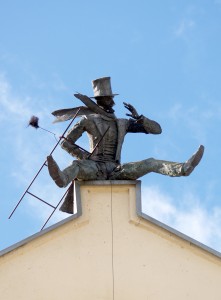When most people think of a chimney sweep, they picture Dick Van Dyke in the movie Mary Poppins. Chimney sweeps existed long before this 1964 musical film. Their history traces back hundreds of years with legend of a chimney sweep who saved the life of King William of Britain in approximately 1066. The appearance of chimneys in Britain in 1200 led to the increasing popularity of the chimney sweep.

What started as one large chimney in a central room developed into chimneys in small rooms used for specialized purposes. Sea coal replaced wood as a burning material and the chimney went from a smoke vent to a location to draw a fire. As flues became narrower, it became more difficult for master sweeps to climb into them, so climbing boys were employed to go up into chimneys and dislodge soot.
This was dangerous work that the average person was not qualified to perform. The Education Act of 1870 brought compulsory education for chimney sweeps. By 1875, legislation required that sweeps become licensed and prohibited the use of climbing boys. The Industrial Revolution had brought more homes with chimneys and chimney sweeps were in high demand.
Despite technological advances in other areas, chimney sweeps are still necessary. Wood, pellet, coal, natural gas, and oil burning appliances contain venting systems that must be maintained. We now know how harmful flue deposits can be and are aware of the dangers of carbon monoxide and combusted gases. Chimney sweeps use specialized cleaning tools, though the traditional chimney brush is still utilized.
The modern chimney sweep is a professional who can maintain, diagnose, and repair. This expert does everything from remove creosote deposits to repair and reline flues. The chimney sweeping industry is regulated by the National Chimney Sweep Guild and Chimney Safety Institute of America, which along with Certified Chimney Professionals, provides chimney sweep certification.
